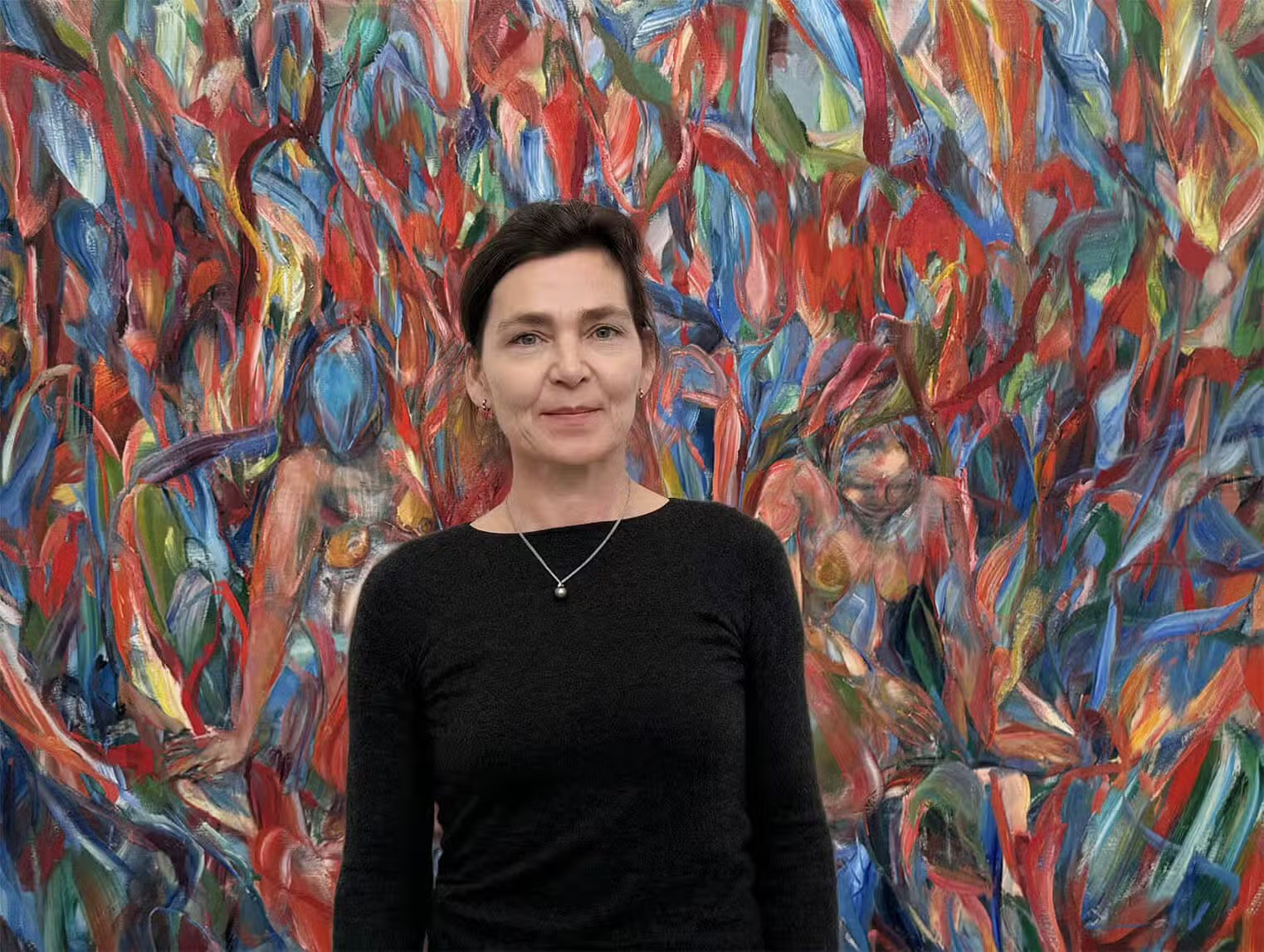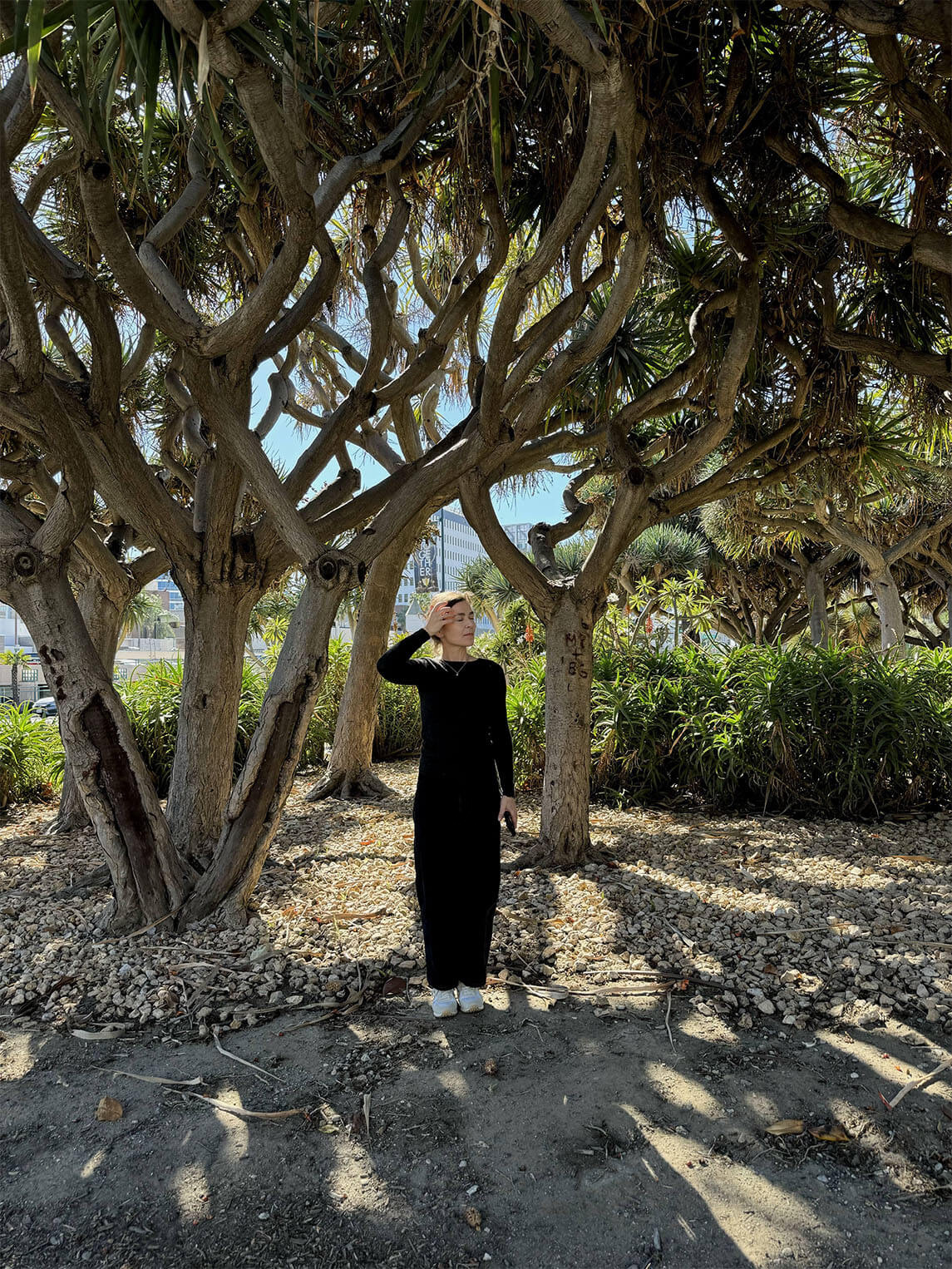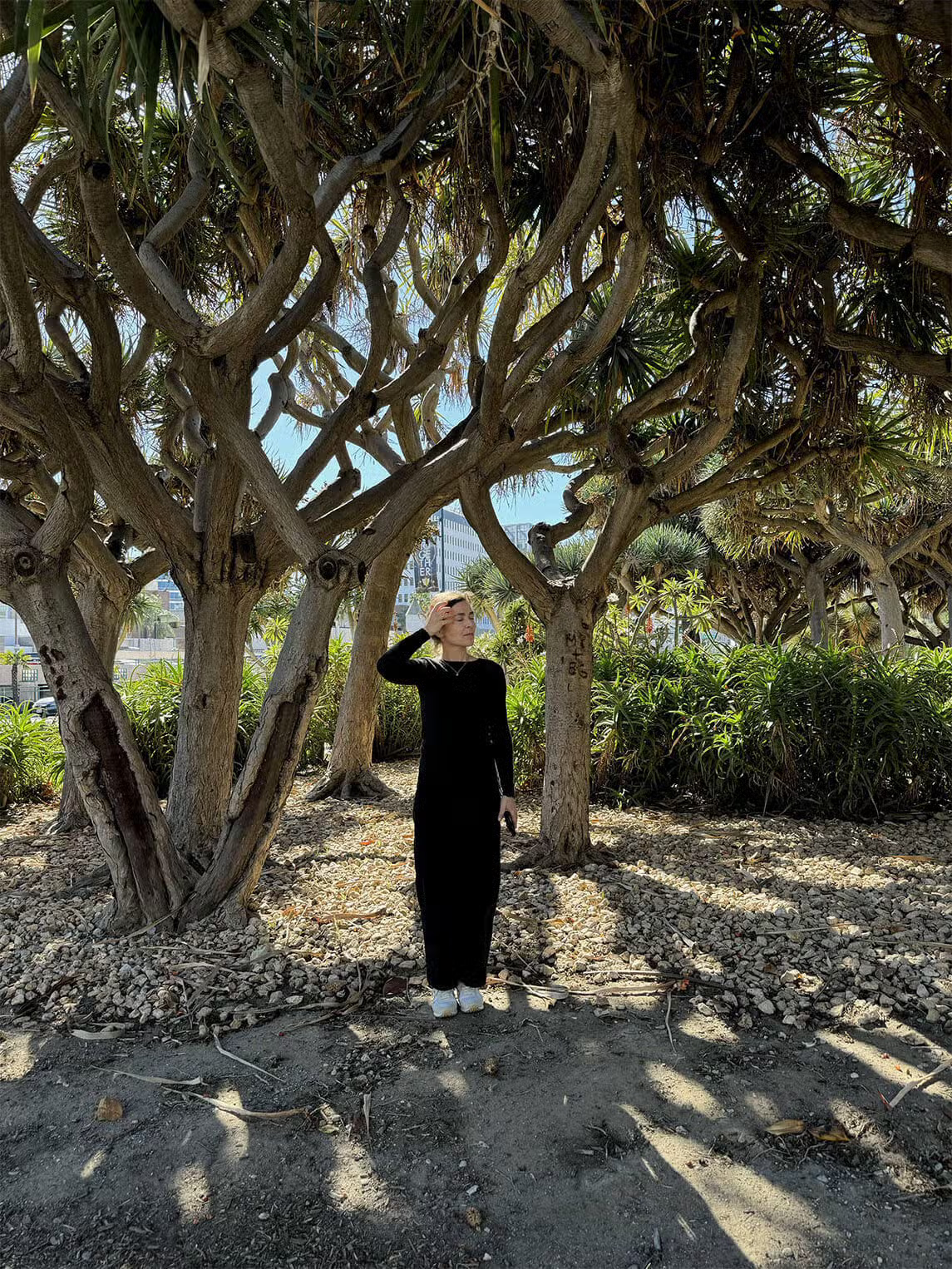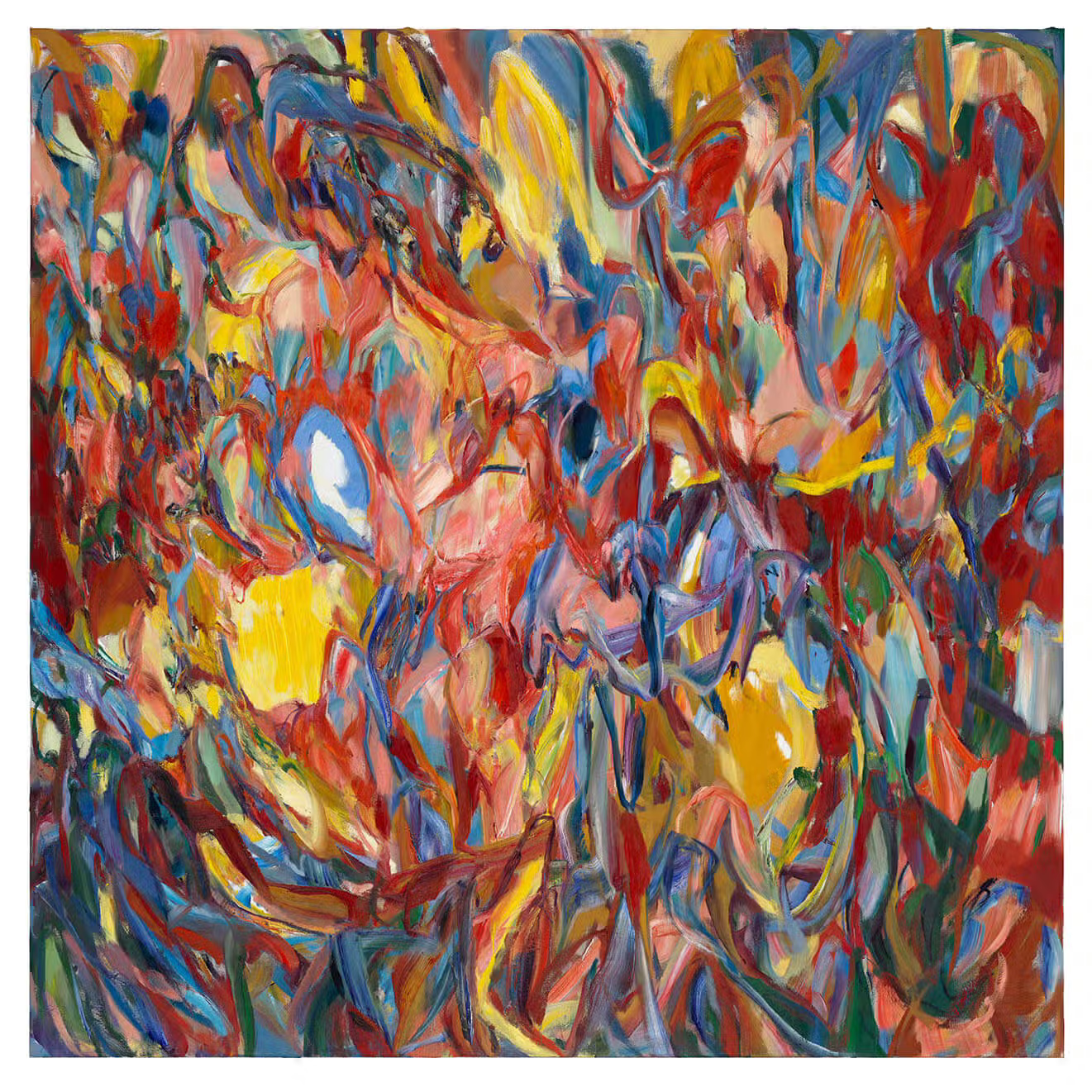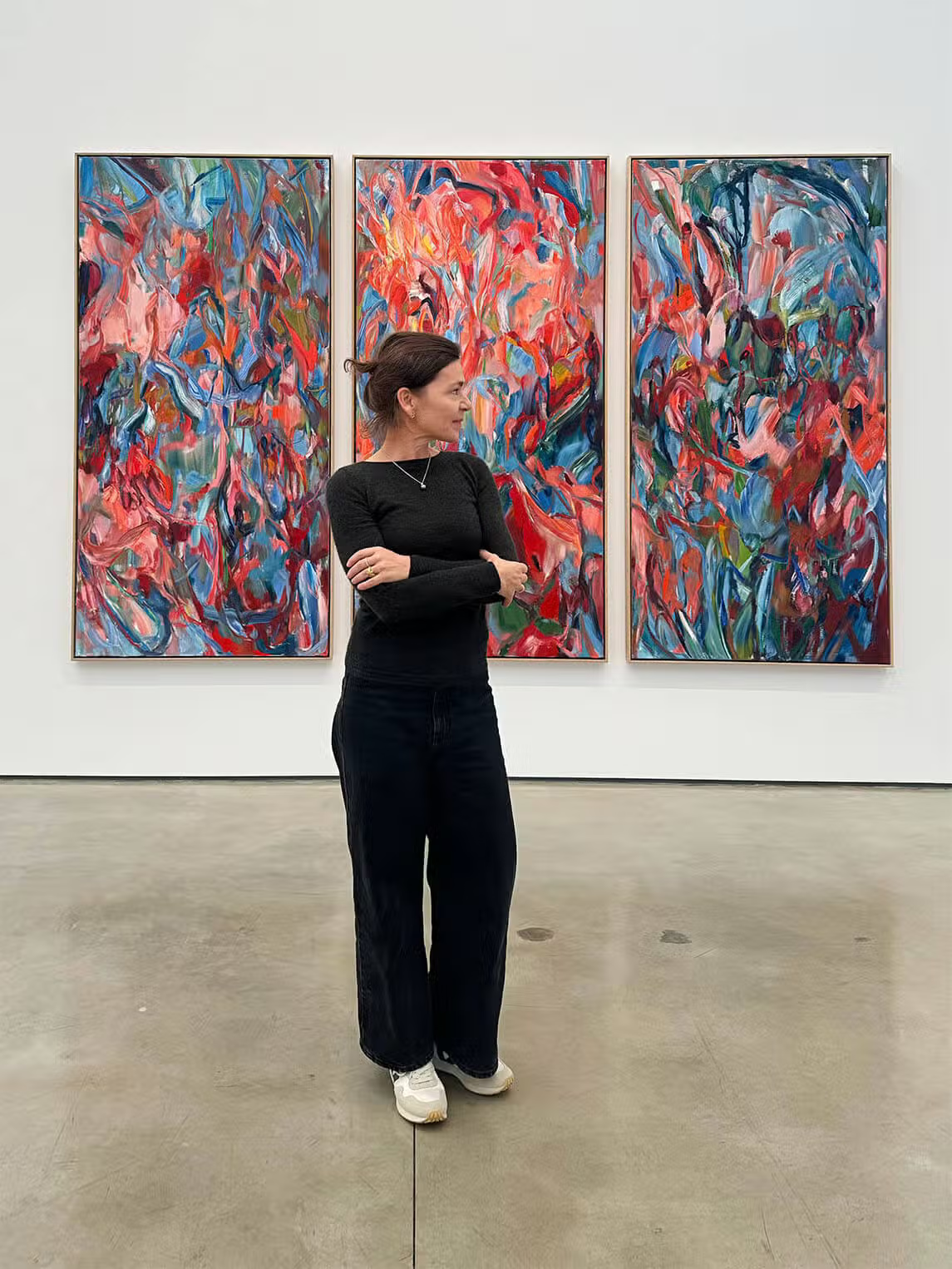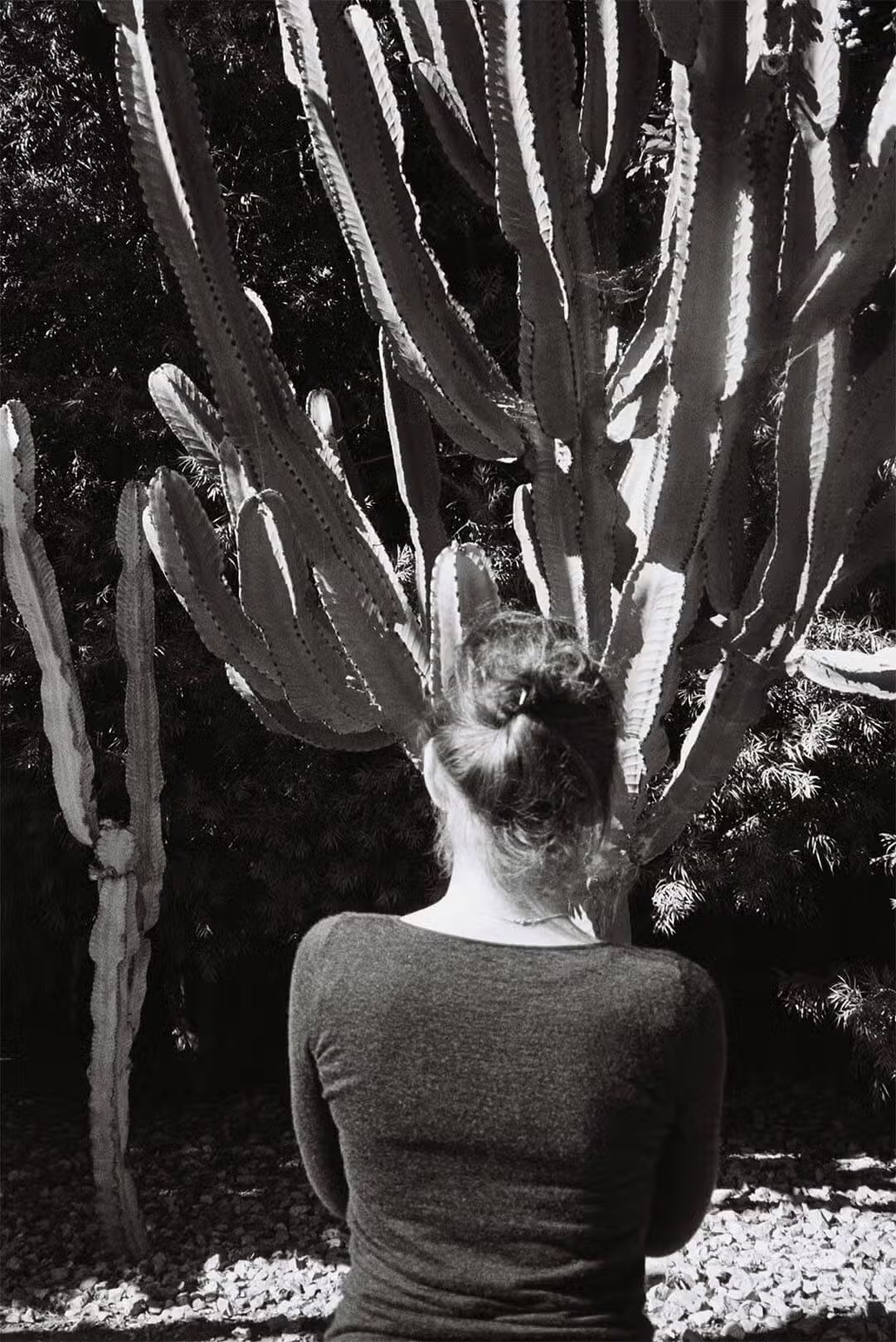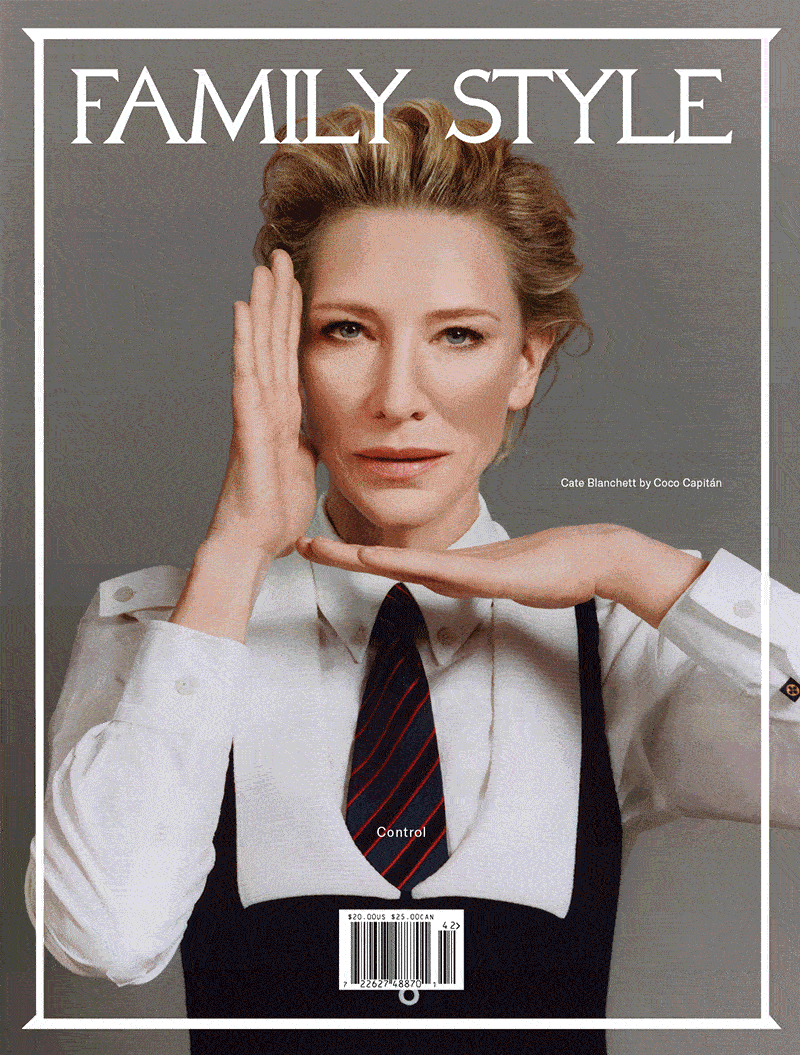Sabine Moritz is out front of Gagosian in Beverly Hills, and we are scanning the upscale, commercial street for something green. On South Santa Monica Boulevard, she spots it, across the street from a Wells Fargo: a historic cactus garden. We make our way over, a brief reprieve in an otherwise jam-packed day leading up to the artist’s West Coast debut later that evening.
As we follow a cacti-lined path to a shady patch offered by the aptly named Elephant Foot trees, the artist stops to examine a plant with elongated, snake-like leaves: “Devil’s tongue,” she reads out loud, amused. “I see it.” Moritz turns to take a photograph of a patch of towering, pale green Candelabra cacti that glow in the sun, motioning to how their branches extend like their namesake.
Back inside the gallery, where Moritz’s solo exhibition “Frost” runs through December 21, she tells me about her childhood in East Germany where she would surround herself in nature. “I always played outside and always played with plants,” she says with a smile. "I would build little worlds, different places for fairy tales, but that was a long time ago.”
Today, she has her garden in Cologne, where she lives with her husband Gerhard Richter and their three children. There are chrysanthemum, rosehip, aster, and dahlia—the ground scattered with falling yellow leaves. An amber tree and a maple tree tower outside her window, and light shines through the branches. Inside her large studio, she moves her paintings around the walls so each sits in the sunlight for a time, colors ablaze. Like the flowers, “they grow over weeks,” she says of the paintings.
For Moritz, working on many canvases at once is a dance, physically demanding and synchronized with an almost subconscious pull. On any given day, she might be creating a still life of a bouquet picked from her garden, an intricate work on paper, or a suite of large-scale canvases in vibrant primary colors that she gradually transforms over time.
As each series builds upon the last, curious human forms have begun to apparate. “In this show, for the first time, there are real figures,” she says. They could all be the same person split into many forms, she suggests. Or doppelgängers of many different identities, in conversation with other painters who have created similar scenes in dialogue with nature. “In Arcadia, two are living and the other two are more like sculptures,” she posits of one such work, adding that she has always wanted to make sculptures.
“There is a contradiction or paradox that you need repetition to establish a work, but it is also always necessary to develop and make changes, otherwise you become boring, or you become bored by yourself,” she says. “When you try a new format, something new comes.” Why the figurative work now? “I don’t know,” she muses. “It probably comes from subconscious visions, a dream world…and I need to be in a special, relaxed mood to have time and feel that I can play around with these different solutions.”
I ask her how she gets there, expecting some answer on a sort of mindful routine. “I change into my working clothes and then I start,” she answers matter-of-factly. “The main problem is to always have enough time without any distractions.”
Moritz’s paintings are meditative. Like a nonlinear landscape, gestural brush strokes in a gradient of colors unfold in abstract shapes that shape shift upon a long, contemplative gaze. The more you look you could just see human forms everywhere, I observe, as I take in the thick, red loops that appear almost like outlines of heads in New World I, 2024. “That’s what people have said,” she concedes, “but for me the forms are quite clear, totally defined.” The rest is abstract, she says, like a movement of colors or, “when you watch the shadows on a wall outside your house and see people, or you watch the clouds.” In Pacific (LA), 2024, blues swells up against reds, yellows, and greens like waves crashing across the Santa Monica shore, where the artist stayed when she visited Los Angeles for the first time this past February. Arcadia, 2024, which at one point was going to be the exhibition’s name, recalls two pairs sitting in a utopia from Moritz’s imagination. “It is a dream world where you could be unified with nature,” she explains
“In LA you have a contradiction where on one hand, you have a city where you really can’t walk, you only exist in an artificial world: in a car, on the highway,” the artist offers. “On the other hand, you have the huge ocean and are surrounded by mountains.” She is drawn to this doubling, this call from nature that echoes in the urban sprawl. By comparison, Cologne is a very industrial place. “You have parks and trees but you have to go by car to be in the wild,” says Moritz. “I miss the real nature, the wide open space. But what to do?” “Make it in your work,” I suggest. “Yeah,” she agrees. “For example, literature can bring your mind to another place. It’s the same with painting… When I work, I don’t miss nature as much. I can create it and imagine that I have it all around me.”
“Sabine Moritz: Frost” is on view until December 21, 2024 at Gagosian at 456 North Camden Drive, Beverly Hills, CA, 90210.


